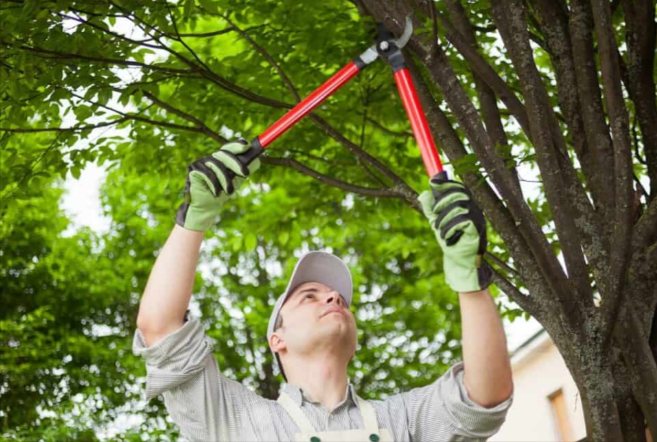As the seasons transition and nature undergoes its rhythmic change, tending to your garden becomes a crucial aspect of maintaining a healthy and vibrant outdoor space. One of the fundamental tasks in this seasonal care routine is branch trimming, perennial pruning, and the removal of annuals. In this comprehensive guide, we’ll explore the importance of these practices, the benefits they offer, and step-by-step instructions to ensure you execute these tasks effectively.
Understanding the Importance of Branch Trimming:
Branch trimming is a vital component of garden maintenance that goes beyond aesthetics. Here’s why it holds such significance:
- Promoting Health and Growth:
- Trimming branches helps stimulate new growth by removing dead or diseased wood.
- Encourages the development of a strong and well-structured canopy for trees and shrubs.
- Enhancing Air Circulation:
- Thinning out branches improves air circulation within the plant, reducing the risk of fungal diseases.
- Ensures that sunlight reaches the inner parts of the plant, promoting photosynthesis.
- Preventing Hazards:
- Regular branch trimming eliminates weak or overhanging branches that could pose a safety hazard during storms.
- Minimizes the risk of branches breaking and causing damage to property or injury.
- Shaping the Landscape:
- Trimming branches allows you to sculpt the shape and size of trees and shrubs, contributing to the overall aesthetics of your garden.
- Provides an opportunity to create a well-balanced and visually pleasing landscape.
Step-by-Step Guide to Effective Branch Trimming:
- Inspect the Tree or Shrub:
- Begin by carefully inspecting the tree or shrub. Identify dead, diseased, or damaged branches that need to be removed.
- Gather the Right Tools:
- Equip yourself with the appropriate tools, such as pruning shears for smaller branches, loppers for thicker ones, and a pruning saw for large branches.
- Start with Dead or Diseased Branches:
- Begin by trimming dead or diseased branches at the base using clean, sharp cuts.
- Remove any branches that show signs of pest infestation or fungal diseases.
- Address Crossing or Rubbing Branches:
- Identify branches that cross or rub against each other, as they can create wounds and invite disease.
- Trim one of the crossing branches to alleviate the pressure and enhance overall health.
- Consider the 3 Ds:
- Focus on the “3 Ds” – Dead, Diseased, and Damaged. Remove branches falling under these categories to promote plant vitality.
- Shape the Canopy:
- If shaping is desired, carefully prune branches to achieve the desired form while maintaining the tree or shrub’s structural integrity.
- Step Back and Assess:
- Periodically step back to assess the overall appearance and balance of the tree or shrub.
- Make adjustments as needed, ensuring a harmonious and visually pleasing result.
Perennial Pruning: Unveiling the Secrets to Healthy Plants:
Pruning perennials is a task often overlooked but is equally crucial for maintaining the health and vigor of your garden. Here’s why perennial pruning is essential:
- Encouraging New Growth:
- Pruning spent blooms and stems encourages the plant to redirect energy towards producing new growth and flowers.
- Stimulates the development of a fuller and more robust plant.
- Controlling Size and Shape:
- Pruning helps control the size and shape of perennials, preventing them from becoming overly leggy or sprawling.
- Contributes to a neat and well-organized garden.
- Preventing Disease Spread:
- Removing dead or diseased parts promptly prevents the spread of diseases to healthy sections of the plant.
- Enhances air circulation, reducing the risk of fungal infections.
- Prolonging Bloom Period:
- Regular pruning can extend the bloom period by removing spent flowers, prompting the plant to produce new blossoms.
Step-by-Step Guide to Effective Perennial Pruning:
- Timing is Key:
- Understand the specific flowering patterns of your perennials to determine the best time for pruning.
- In general, early spring or late fall is ideal for most perennials.
- Identify Spent Blooms and Stems:
- Inspect the plant for spent blooms, yellowing or dead stems, and any signs of disease.
- Use clean, sharp pruning shears for precision.
- Cut Above Nodes or New Growth:
- When pruning, make cuts just above a set of healthy leaves, nodes, or new growth.
- Ensure a slight angle to facilitate water runoff and discourage disease.
- Remove Diseased or Pest-Infested Parts:
- If you notice signs of disease or pest infestation, remove affected parts and dispose of them properly to prevent further spread.
- Consider Plant-Specific Needs:
- Different perennials may have specific pruning requirements. Research the particular needs of each plant in your garden before pruning.
- Regular Maintenance Pruning:
- Incorporate regular maintenance pruning throughout the growing season to keep perennials in optimal health.
- This may include deadheading spent blooms and shaping the overall structure.
Annual Removal: A Necessary Step for a Renewed Landscape:
Removing annuals as part of your garden maintenance routine is essential for several reasons:
- Clearing Space for New Growth:
- Annuals have a finite lifespan, and removing them at the end of the season clears space for new plantings or allows perennials to take center stage.
- Preventing Disease and Pests:
- Removing spent annuals helps prevent the buildup of diseases and pests that may overwinter in decaying plant material.
- Promotes a healthier garden environment.
- Soil Health and Nutrient Recycling:
- Clearing out annuals allows for the incorporation of organic matter into the soil, contributing to soil health and nutrient recycling.
- Prepares the ground for future plantings.
- Enhancing Aesthetics:
- Removing wilted or dead annuals enhances the overall aesthetics of your garden.
- Creates a tidy and well-maintained appearance.
Step-by-Step Guide to Effective Annual Removal:
- Wait Until the Right Time:
- Time the removal of annuals based on their specific life cycle. Typically, this occurs after the first frost or when the plants show signs of decline.
- Gently Remove the Entire Plant:
- Grasp the base of the annual plant and gently pull it from the soil.
- Shake off excess soil to minimize the risk of carrying over pests or diseases.
- Dispose or Compost:
- Dispose of the removed annuals properly, either through municipal green waste disposal or composting.
- Avoid composting diseased plants to prevent the spread of pathogens.
- Prepare the Soil:
- Once annuals are removed, prepare the soil by adding compost or organic matter to enrich its fertility.
- Consider testing the soil and adjusting nutrient levels as needed.
- Plan for Succession Planting:
- Use the cleared space to plan for succession planting or prepare the area for the next season’s garden layout.
- Consider rotating crops or introducing new varieties for a dynamic and diverse garden.
Conclusion: Cultivating a Healthy and Beautiful Garden Year-Round:
In conclusion, branch trimming, perennial pruning, and annual removal are integral components of maintaining a healthy and beautiful garden throughout the seasons. These practices not only contribute to the aesthetics of your outdoor space but also promote the overall well-being of your plants. By understanding the importance of each task and following the step-by-step guides provided, you’ll be well-equipped to cultivate a garden that thrives year-round, showcasing the beauty of nature’s cycles in your own backyard.




